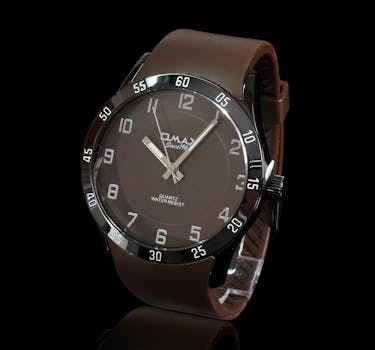The Introduction of Quartz in Watchmaking

The introduction of quartz technology in the 1970s marked a seismic shift in the watchmaking industry. Prior to this revolution, traditional mechanical watches had dominated the timeframe for artisanal craftsmanship since the 16th century. These watches employed intricate gears, springs, and balance wheels that defined the charm and challenge of horology. However, the advent of quartz watches brought about unprecedented accuracy and affordability, challenging age-old traditions.
The Advantages of Quartz Technology

One of the main selling points of quartz watches is their remarkable precision. Quartz movements generally don’t need to be adjusted as often as mechanical ones, with an accuracy of only seconds lost per month—a stark contrast to the minutes sometimes seen in mechanical watches.
Additionally, quartz watches significantly lowered the cost of production. While several high-end traditional watches can command prices into the thousands, quartz watches were often produced in large quantities at the basic entry-level pricing. This accessibility drawn consumer attention and fostered a wider acceptance of timekeeping devices beyond a mere luxury item.
Challenges for Traditional Watchmakers

Traditional watchmakers faced a crisis with the influx of quartz products that threatened their heritage and artistry. Many esteemed watch companies found themselves unable to compete with the formidable entity that was quartz. Some entrepreneurship structures crumbled, and a few watch brands even went out of business altogether.
Moreover, quartz technology spurred a trend towards mass production, placing artisanal timepieces aka mechanical crafts in the shadow. This ignited debates on authenticity—detailing what constitutes a ‘watch’ as an object of craftsmanship versus mere efficiency.
Innovative Adaptation within Traditional Watchmaking

Rather than succumbing entirely to the quartz movement, traditional watch manufacturers pondered ways to innovate against the backdrop of sophisticated, mass-market competition. Some established brands have successfully integrated quartz technology into their lineup while continuing to produce exquisite mechanical versions. An example includes hybrid watch models that offer both automatic and quartz mechanisms, showcasing the benefits of each technology while appealing to both mechanical enthusiasts and modern consumers.
The indulgence of quartz continued to escalate, inviting only careful consideration rather than outright refusal within the horology community. Prestigious manufacturers now employ quartz for concepts such as advanced time-readouts, phased-complications, and even further undiscovered high-tech functionality beyond mechanical means.
Key Takeaways

- Quartz technology revolutionized the watchmaking industry by providing affordable, highly accurate timepieces.
- Many traditional watchmakers struggled under the pressure from quartz, leading to failures and adaptations.
- The effective integration of quartz in luxury timepieces has legitimized and preserved traditional craftsmanship.
Conclusion

The impact of quartz technology on traditional watchmaking tells a compelling story of conflict, adaptation, and reverence for skilled craftsmanship. It presented a dust storm initially, but amid its tumult, it demanded more refined creativity and collaboration from existing brands. Mechanical age may stand alongside the quartz era in an unlikely partnership depicting recognizing the power of handcrafted pursuits alongside collective technical advancement.






